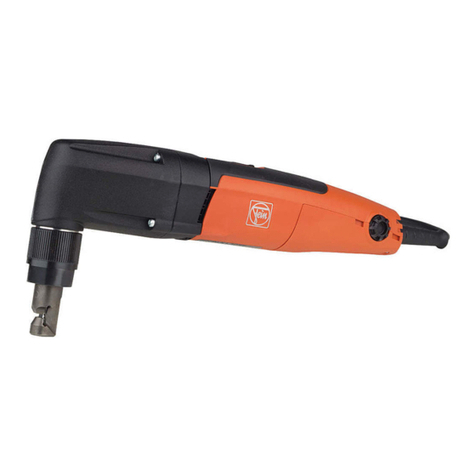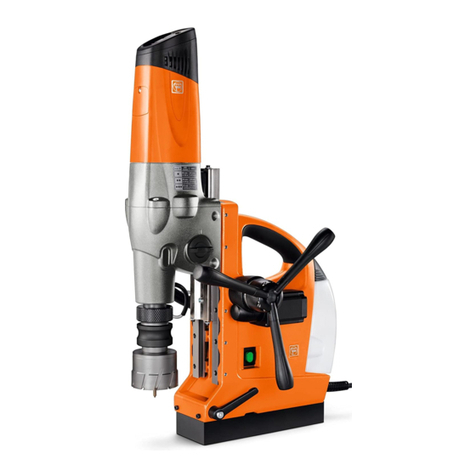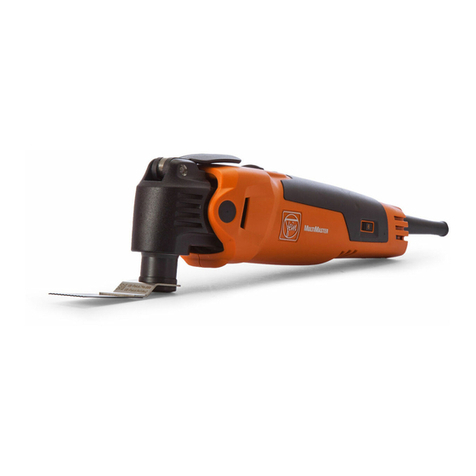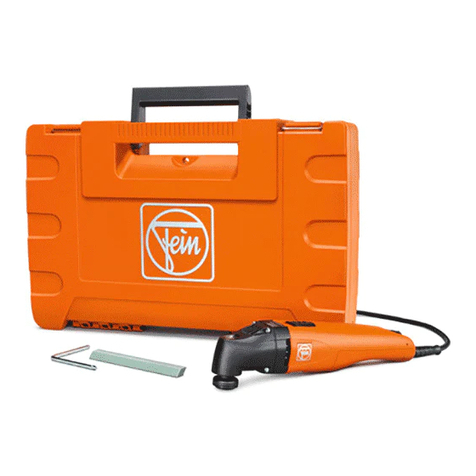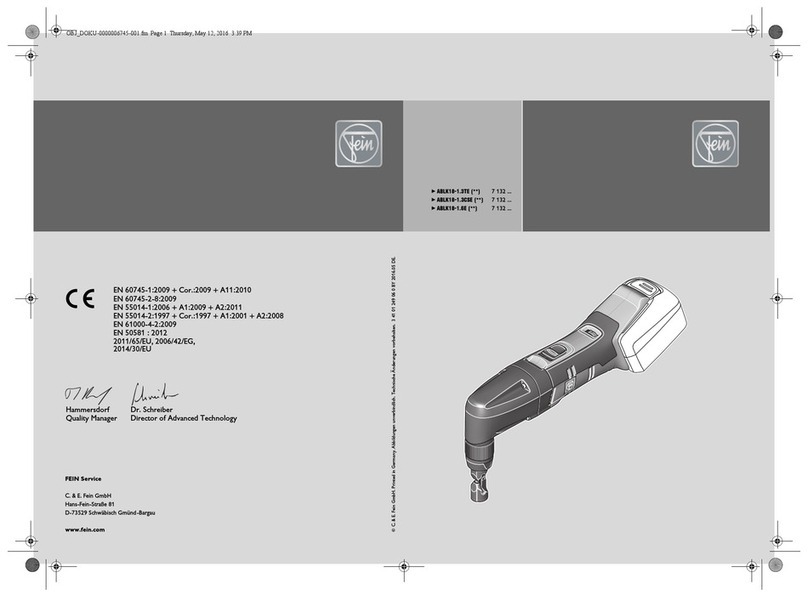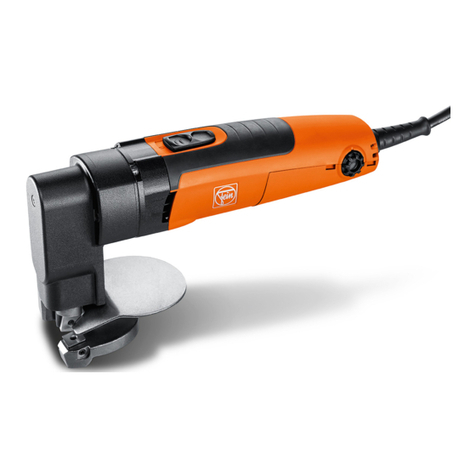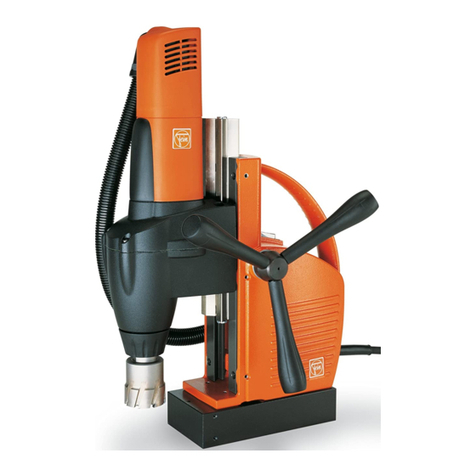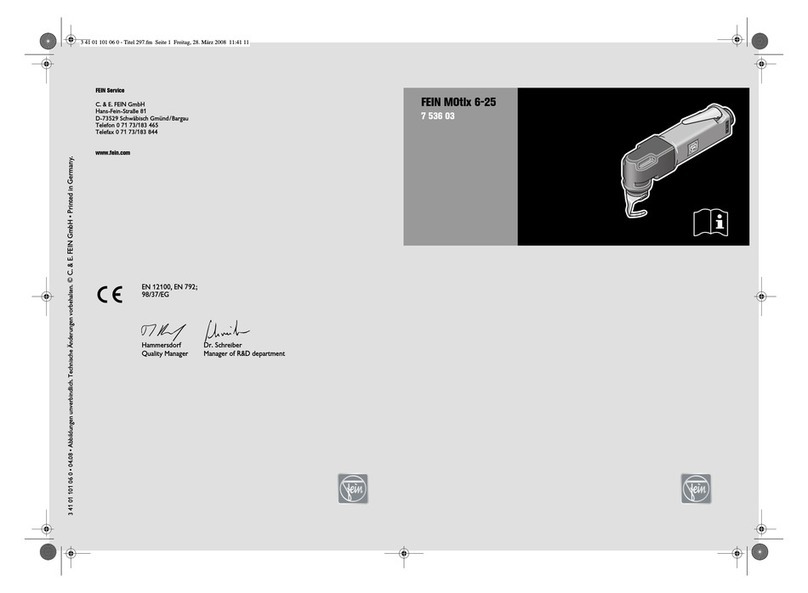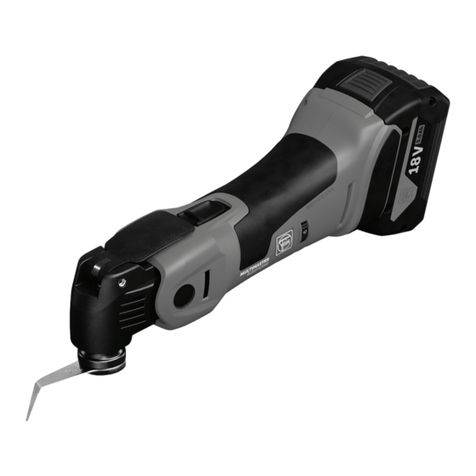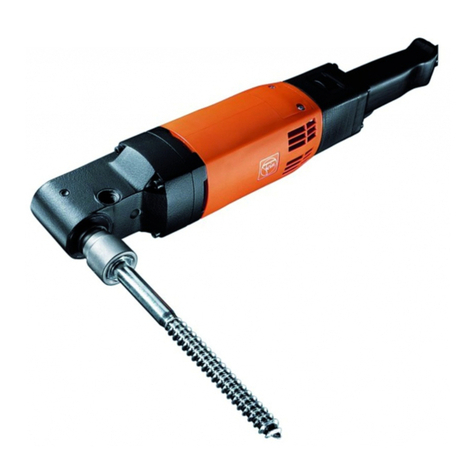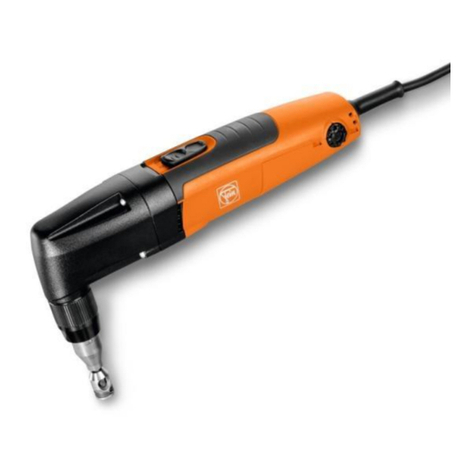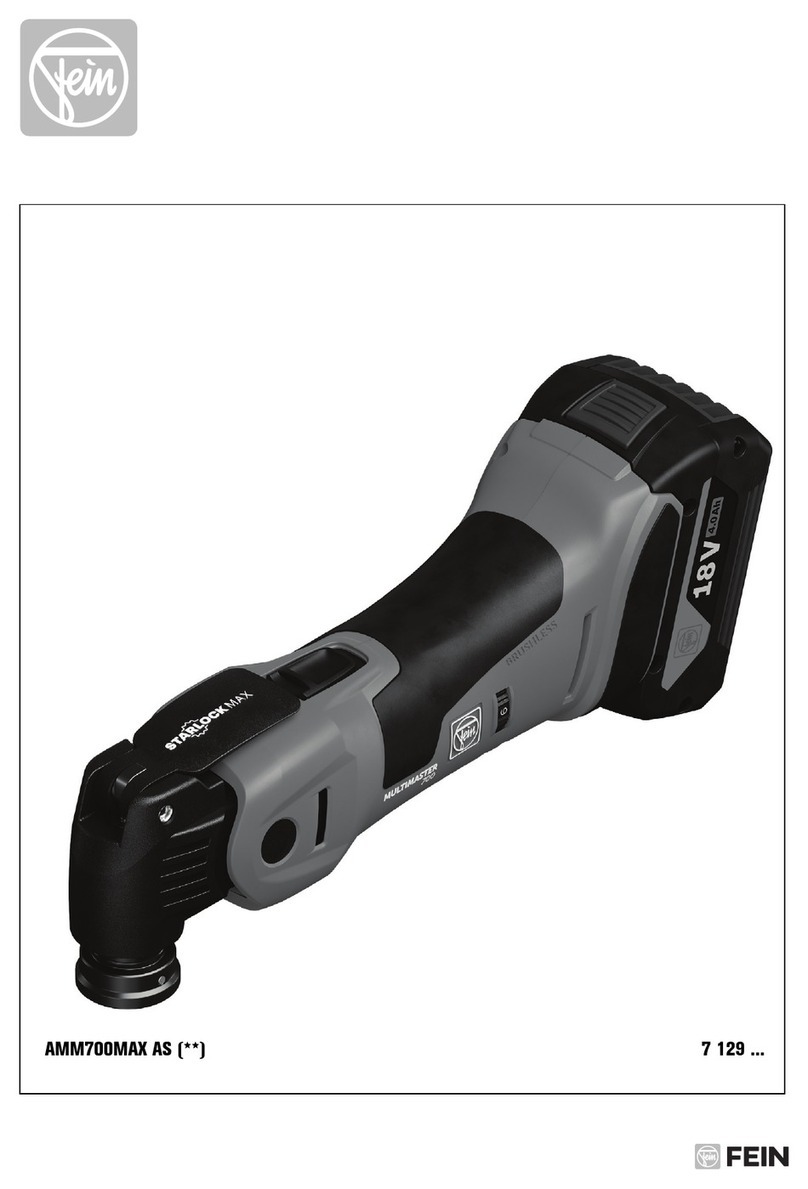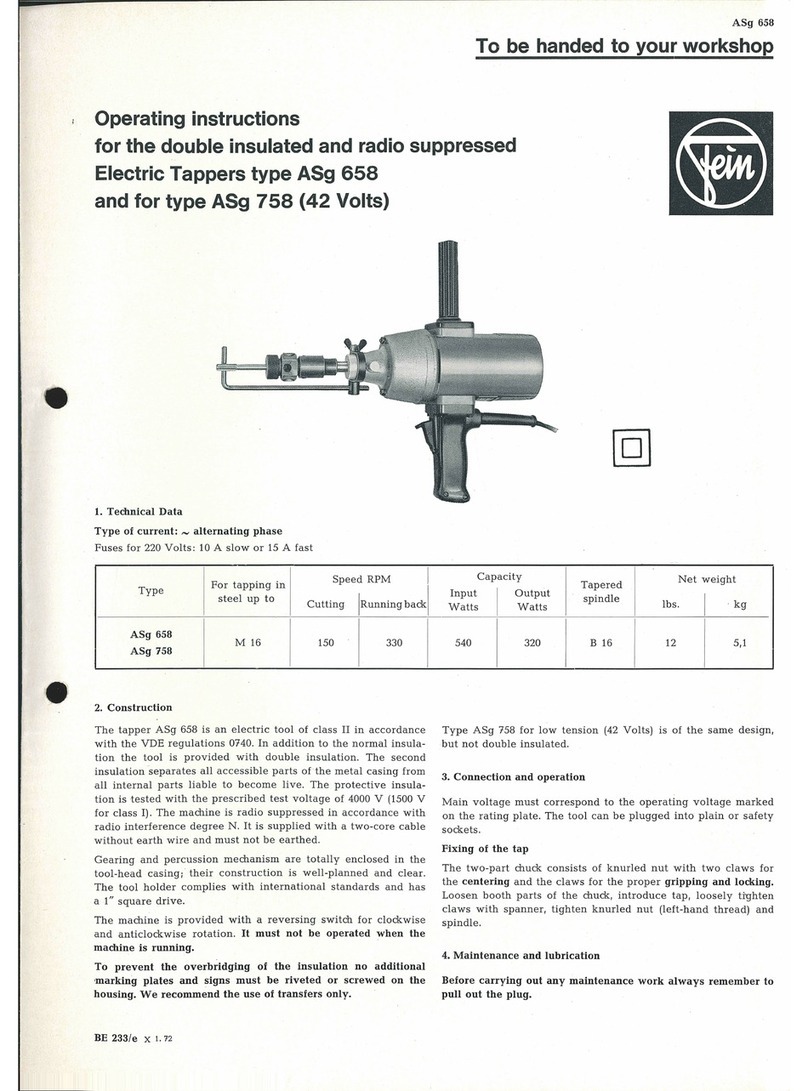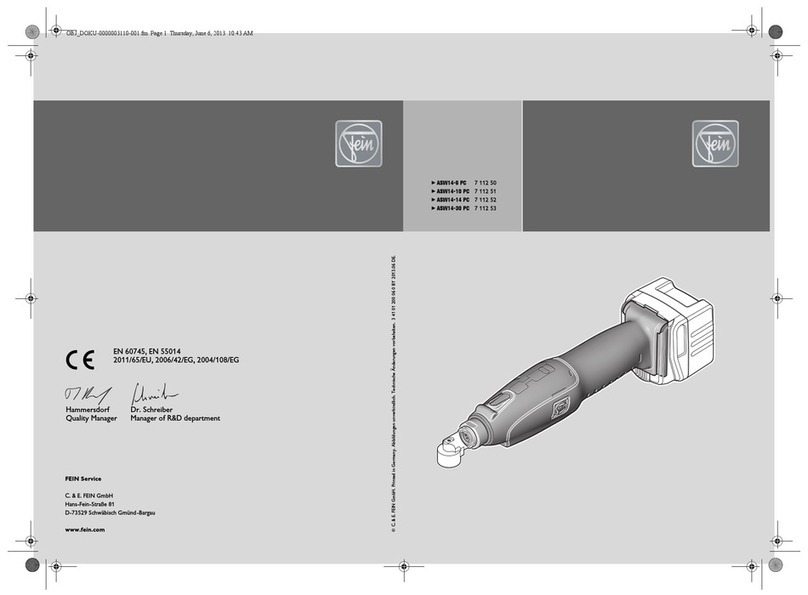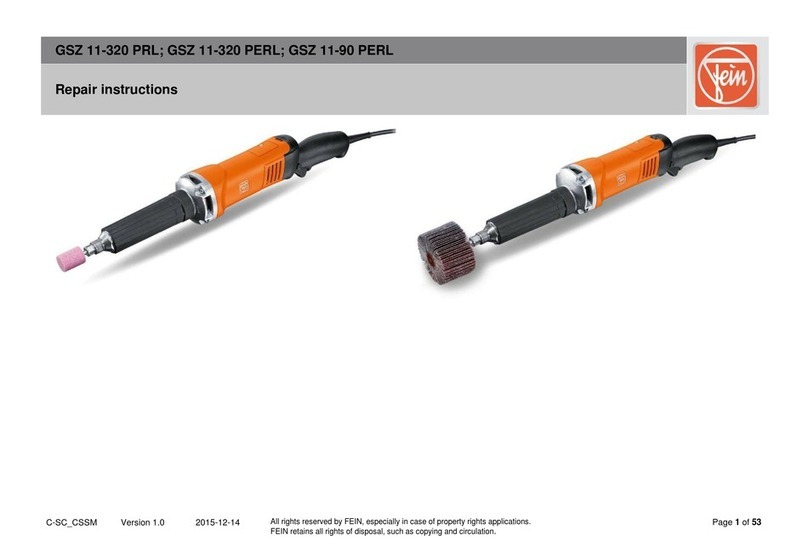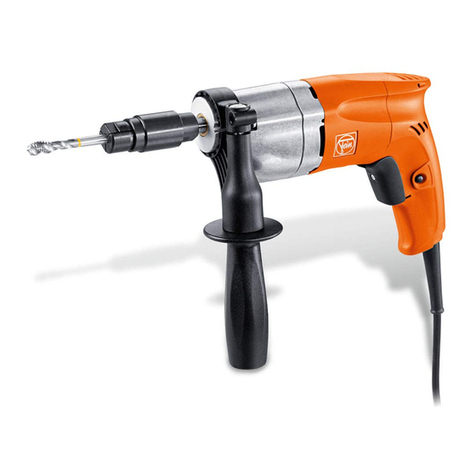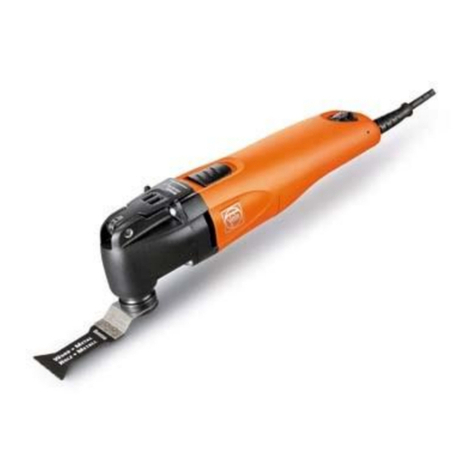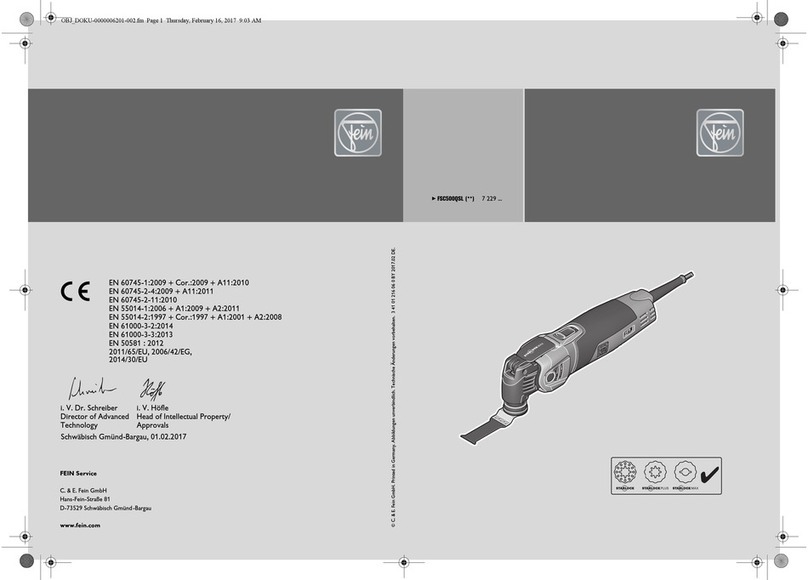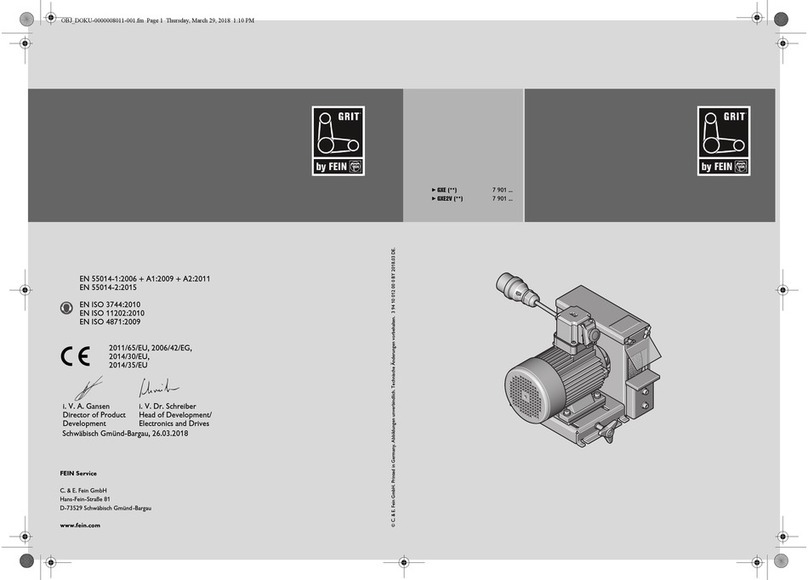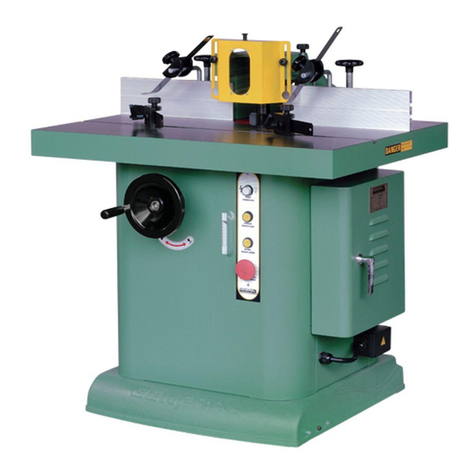
5
en
Safety instructions.
Bevel milling tool Safety Warnings
Hold power tool by insulated gripping sur-
faces only, because the cutting tool could cut
into the machine's power cord. Contact with
a “live” wire make exposed metal parts of
tool “live” and shock the operator.
Use clamps or another practical way to
secure and support the workpiece on a stable
platform. Holding the work by hand or
against your body leaves it unstable and may
lead to loss of control.
Special safety instructions.
Do not use accessories which are not specifi-
cally designed and recommended by the tool
manufacturer. Just because the accessory can
be attached to your power tool, it does not
assure safe operation.
Do not use a damaged accessory. Before each
use, check the indexable inserts for chipping
and cracks, wear or heavy use. If the machine
or application tool is dropped, inspect for
damage or install an undamaged application
tool.
Wear personal protective equipment. Depend-
ing on application, use a face shield, safety
goggles or safety glasses. As appropriate,
wear dust mask, hearing protectors, gloves
and workshop apron capable of stopping
small abrasive or work piece fragments. The
eye protection must be capable of stopping
flying debris generated by various operations.
The dust mask or respirator must be capable
of filtrating particles generated by your oper-
ation. Prolonged exposure to high intensity
noise may cause hearing loss.
Keep bystanders a safe distance away from
work area. Anyone entering the work area
must wear personal protective equipment.
Fragments of workpiece or of a broken acces-
sory may fly away and cause injury beyond
immediate area of operation.
Always hold the power tool firmly when start-
ing it. The reaction torque of the motor, as it
accelerates to full speed, can cause the power
tool to twist.
If possible, use clamps to fasten or affix the
workpiece. Never hold a workpiece in one
hand and the power tool in the other hand
while in use. Clamping workpieces allows
you to use both hands for better control the
power tool.
Never lay the power tool down until the acces-
sory has come to a complete stop. The spin-
ning accessory may grab the surface and pull
the power tool out of your control.
Do not run the power tool while carrying it at
your side. Accidental contact with the spin-
ning accessory could snag your clothing, pull-
ing the accessory into your body.
Regularly clean the power tool’s air vents.
The motor’s fan will draw the dust inside the
housing and excessive accumulation of pow-
dered metal may cause electrical hazards.
Do not operate the power tool near flammable
materials. Sparks could ignite these materials.
Do not use accessories that require liquid
coolants. Using water or other liquid coolants
may result in electrocution or shock.
Secure the work piece firmly. A work piece
that is gripped tightly in a clamping device or
vice, is more secure than if held by hand.
Before putting into operation, check the
power connection and the power plug for
damage.
Recommendation: The tool should always be
supplied with power via a ground fault circuit
interrupter (GFCI) with a rated current of
30 mA or less.
Kickback and related warnings
Kickback is the sudden reaction to a pinched
or snagged rotating application tool. Pinching
or snagging causes the rotating application
tool to rapidly stop. This can cause a power
tool to be forced in the opposite direction to
the rotating application tool at the point of
binding.
For example, if the indexable insert is snagged
or pinched in the workpiece, the edge of the
indexable insert entering into the workpiece
can get caught, causing the indexable insert to
break out or cause kickback. The indexable-
insert holder may either jump toward or
